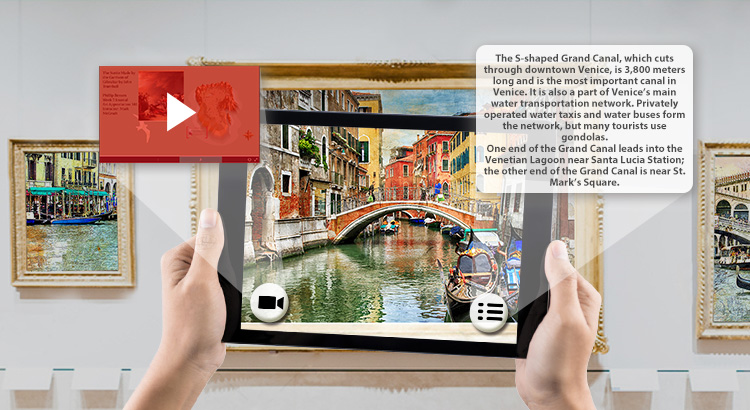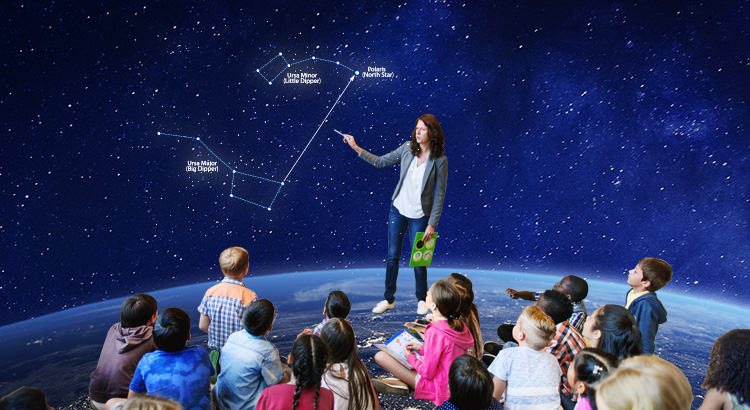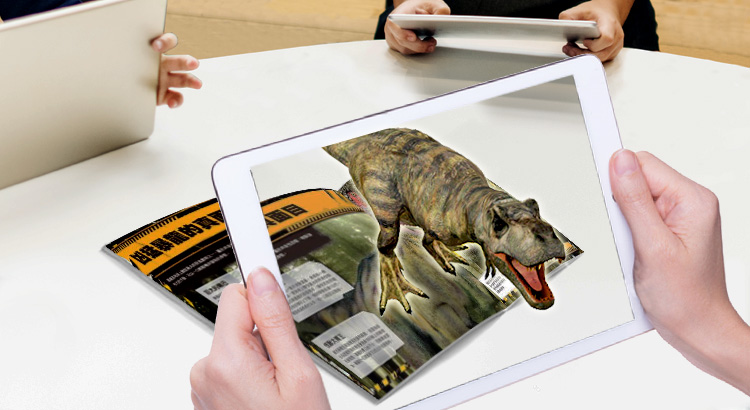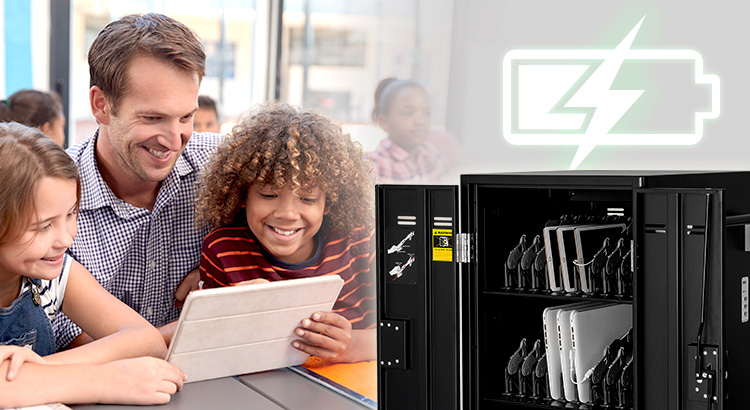Once upon a time, when a student pulled out a smartphone in class, he or she was in danger of a trip to the principal’s office. Today though, such dissonance between traditional teaching materials and technological advancements is quickly fading, as many educators are always looking for new ways to incorporate students' smart devices into lesson plans.
That demand has led to a growing market for educational augmented reality (AR) applications. This exciting innovation allows teachers to mix their analog textbooks, handouts, and classrooms with technology into a perfect harmony of learning.
Current AR Applications

Augmented reality solutions are already commonplace in classrooms around the world. Author and teacher Todd Nesloney points out a number of ways educators are implementing AR in lesson plans, including flashcards that trigger 3D models on smart devices and homework assignments that students can scan for video help.
Another common educational use for AR is found in museums. In a recent article, I covered smart glasses that liven up displays with animated descriptions, an innovation that should eventually make those audio companions museums rent out obsolete. What makes this use of AR relevant to the topic at hand is the way it turns any device into a museum. For example, the Statue of Liberty museum released an AR app that teachers can use to bring the iconic landmark into the classroom, and the BBC is turning its educational shows into digital museums via companion apps.
AR is also the perfect teacher’s assistant when it comes to teaching subjects like science and foreign languages. Google Expeditions transport educational content such as planets, geographical formations, and historical objects into the classroom. Students can use personal devices to gather around and closely examine a 3D visual, delving deeply into the subject matter. Mondly makes learning a second language more engaging by filling the classroom with interactive items and animals. A quick online search will yield a lengthy list of further options, and there are always more exciting developments showing up as AR evolves.
Future AR Innovations

Forbes contributor John Koetsier believes that “In the future, every object will be smart,” going so far as to predict that within 10 years or so we will replace smartphones with smart glasses. If he’s correct, expect to see the classroom ceiling transform into a vibrant planetarium screen, or watch the floor become the glass bottom of a tour boat on a clear, tropical ocean. Schools would no longer be limited to field trips as a method for allowing students to experience the universe in which they live.
Innovators are even discussing a future in which AR technology eliminates the negative effects of staring at screens. One huge issue with the digital classroom is the constant screen time harming learners’ eyesight. Smart glasses and contact lenses could solve that problem by enabling viewing digital overlays and holograms to replace staring at a stationary, blue light–emitting monitor for hours.
The classroom of the future may look like something like a spaceship from your favorite sci-fi flick. Perhaps physical schools will disappear altogether, as hologram AR teachers with artificial intelligence show up at residences for one-on-one tutoring. It’s really not as crazy as it sounds.
Why AR Classrooms Work

At this point, you may be wondering why it’s necessary to pour so much money and effort into developing AR technology specifically for classrooms. After all, people have been successfully taught for generations with simple, inexpensive books. Well, the answer is engagement.
Teachers at every level of education know that engagement is the key to optimizing and customizing learning. AR solutions provide some of the most engaging and interactive learning experiences imaginable, and those interactions will only improve as the technology gets better.
AR is also ideal for catering to every learning style in the classroom. It delivers striking optics for visual learners, audio accompaniment for auditory learners, and screen swiping or tapping for kinesthetic learners. Wharton University Learning Lab Project Delivery Manager Lan Ngo perfectly sums up AR’s value in this area, calling it “a powerful supplemental learning tool with the awesome ability to reach every style of student.”
How AR and AVer Connect

The AR capability cropping up in classrooms is exciting to all of us at AVer. While we don’t focus directly on this technology, our EduTech products are invaluable to those who do. Allow me to explain.
As mentioned previously, a significant application of AR for schoolwork involves triggers on physical books, papers, or other objects that lead to adjunct content. That’s where AVer steps in with cutting-edge cameras that teachers can use to create content to upload to the Internet and link via QR code on homework handouts and more.

That’s not all. An AR-embedded classroom requires an army of tablets, laptops, and smartphones that need safe charging and storage. AVer’s intelligent charging solutions evenly power up devices, protecting them behind solid steel frames and three-point locks so they’re always ready for the next AR learning adventure.
Thanks to tech like AR, the future of education is bursting with mind-blowing possibilities for engagement. The best part is that since learning is a life-long process, people of all ages will have the opportunity to enjoy these previously unimaginable sensory experiences.